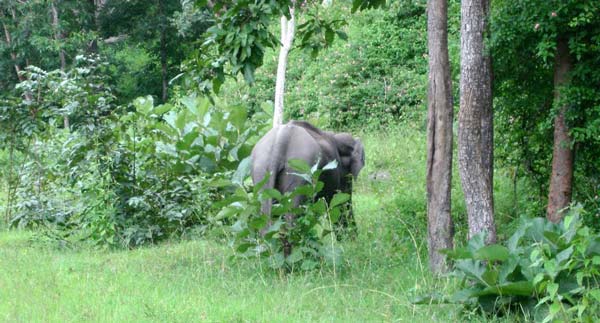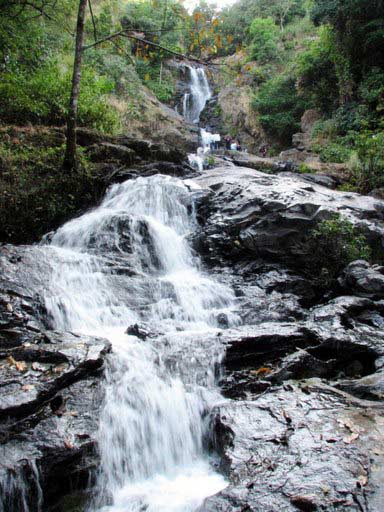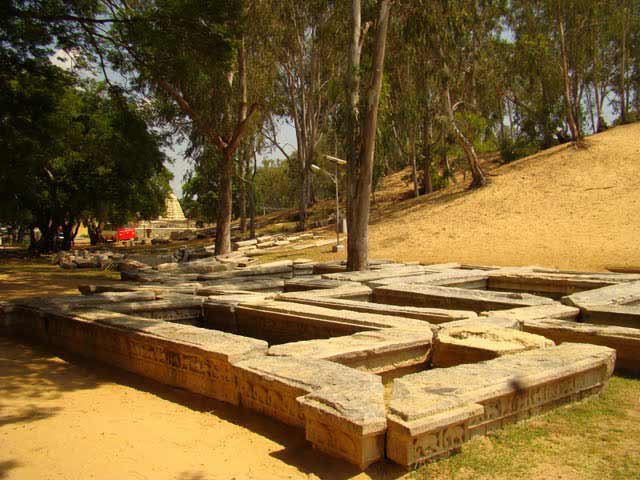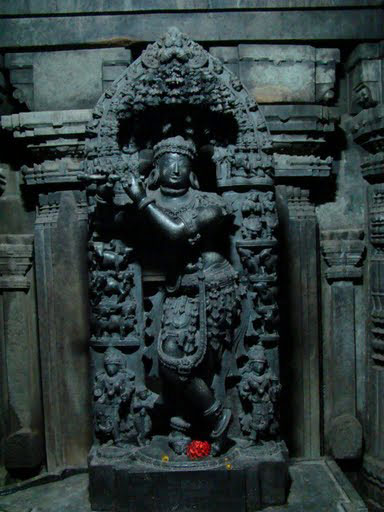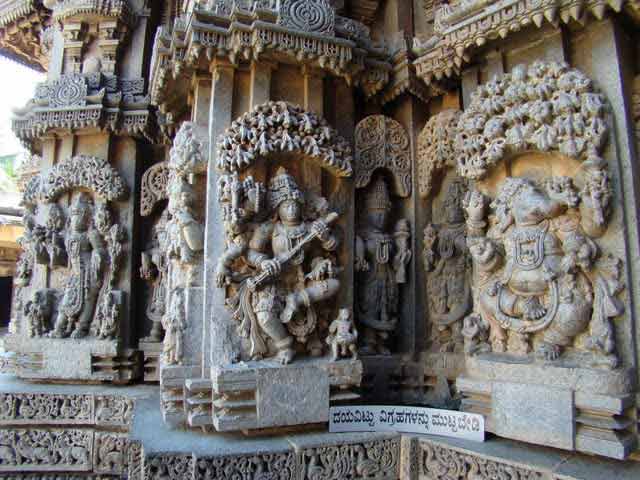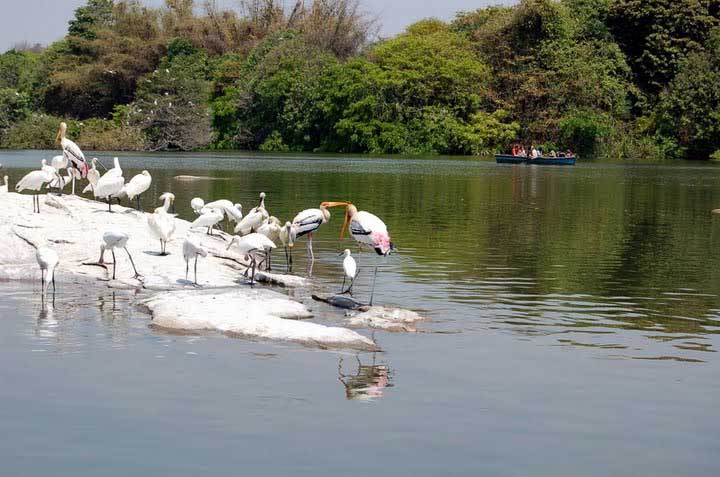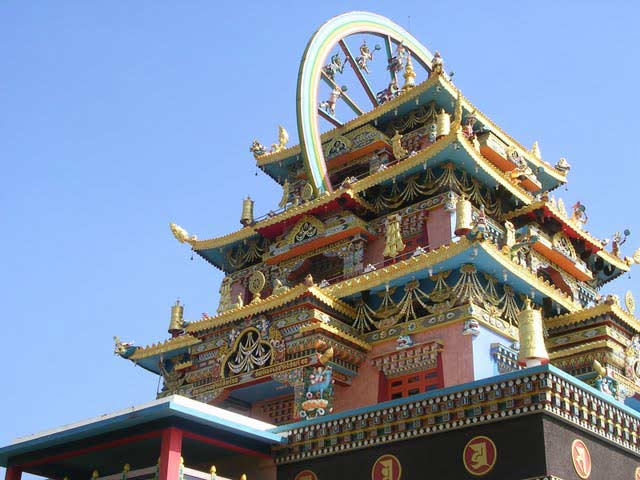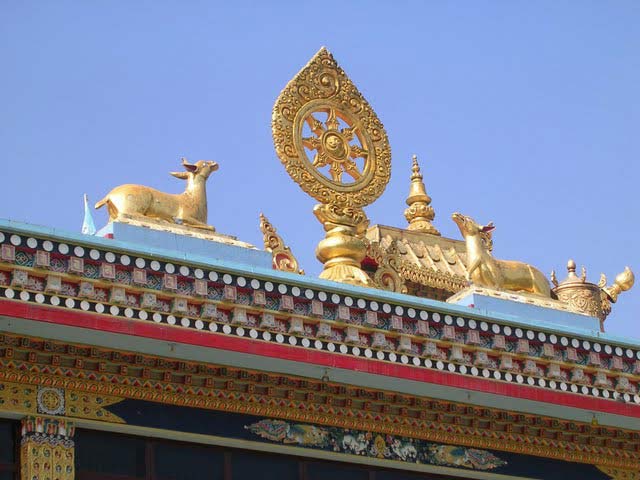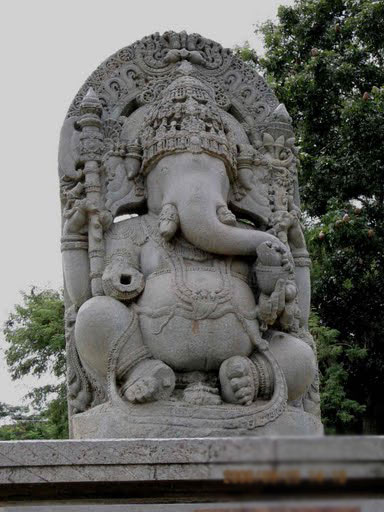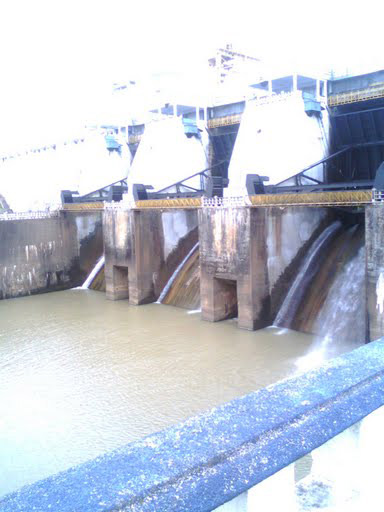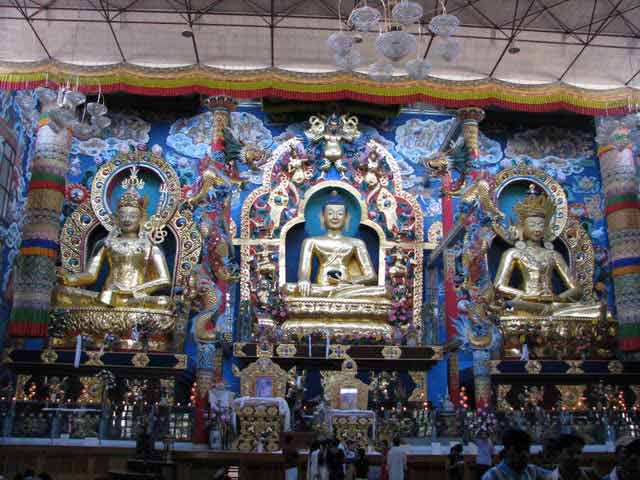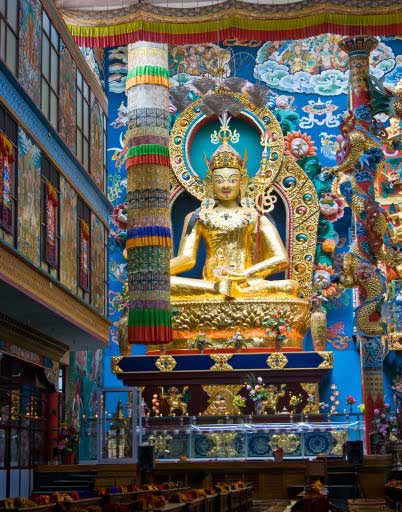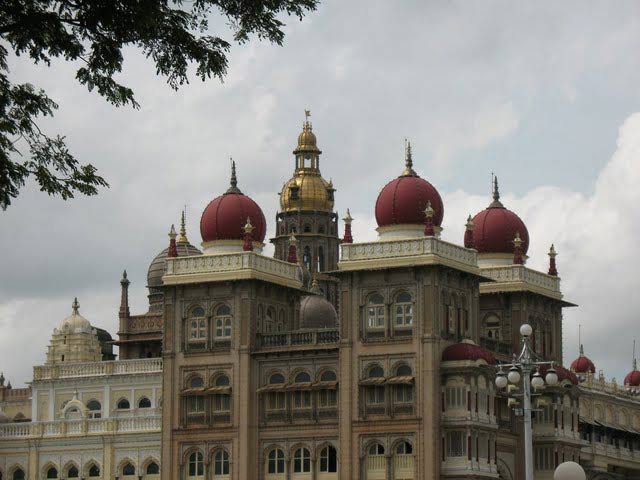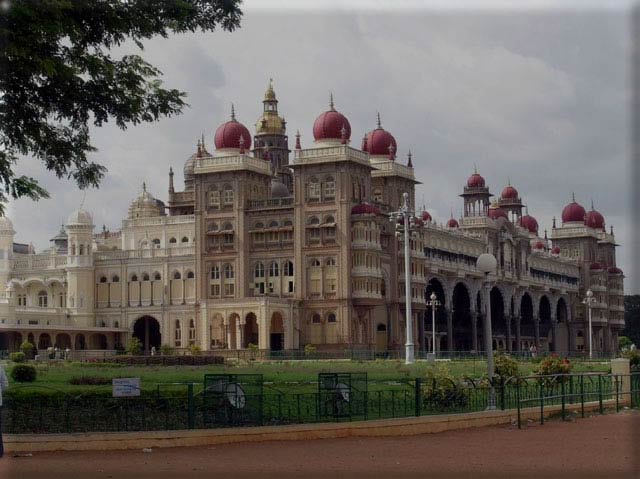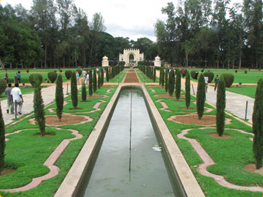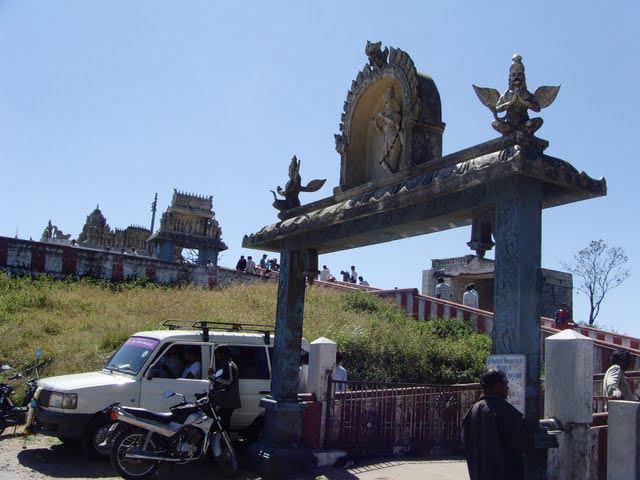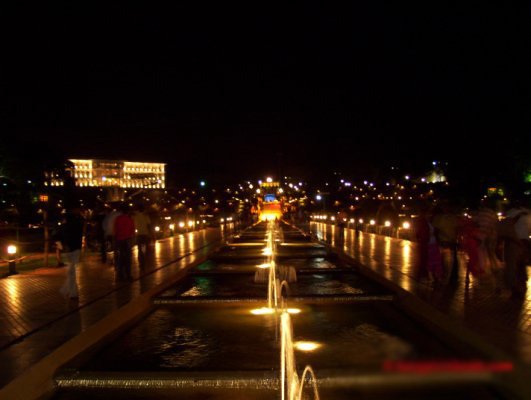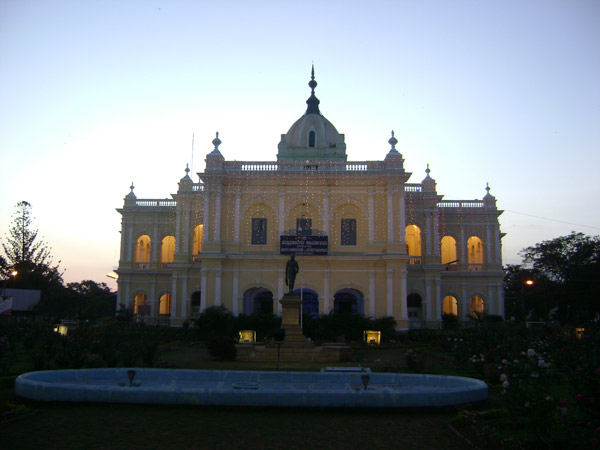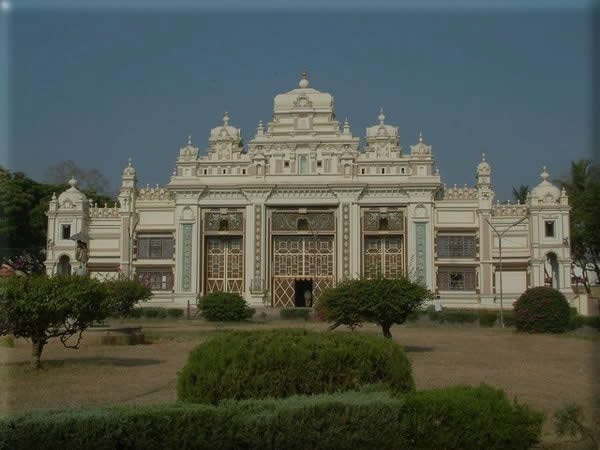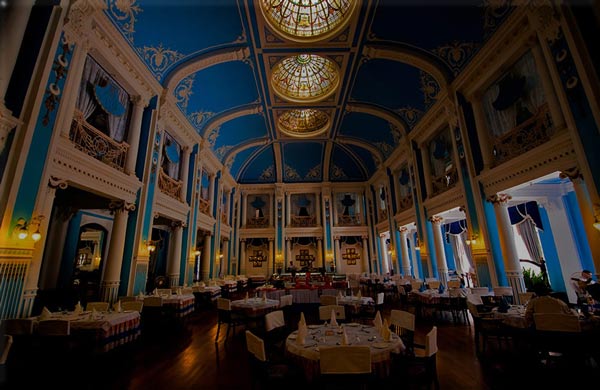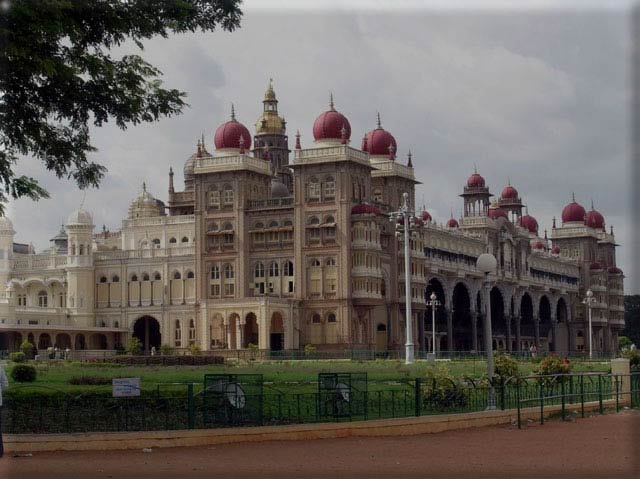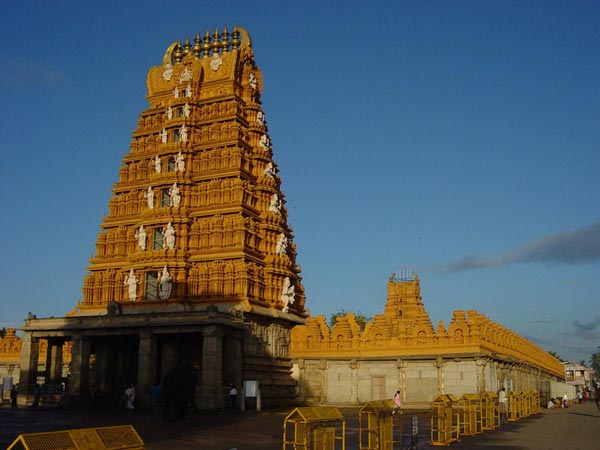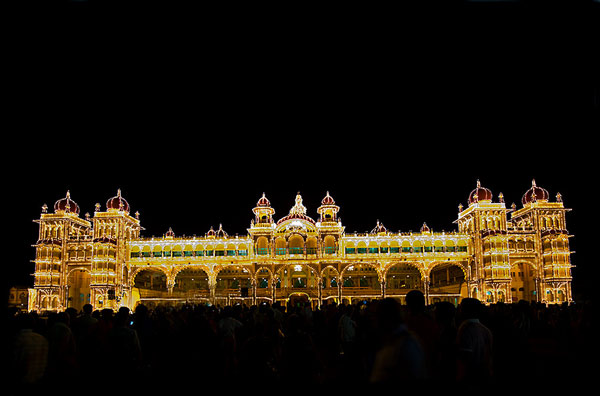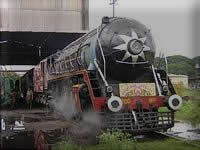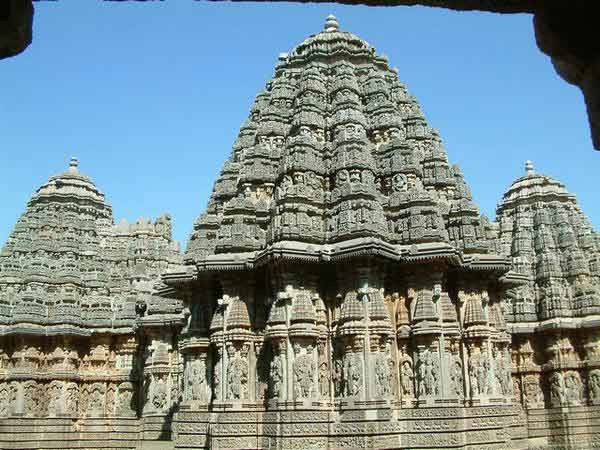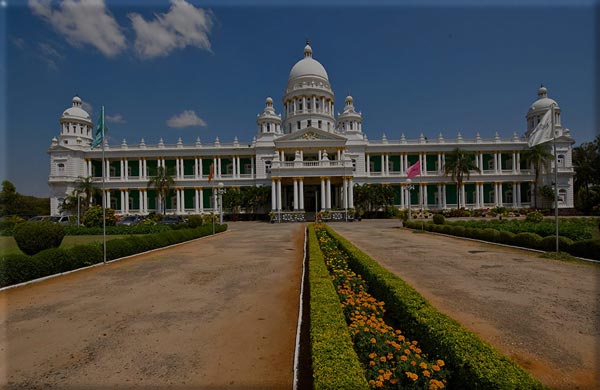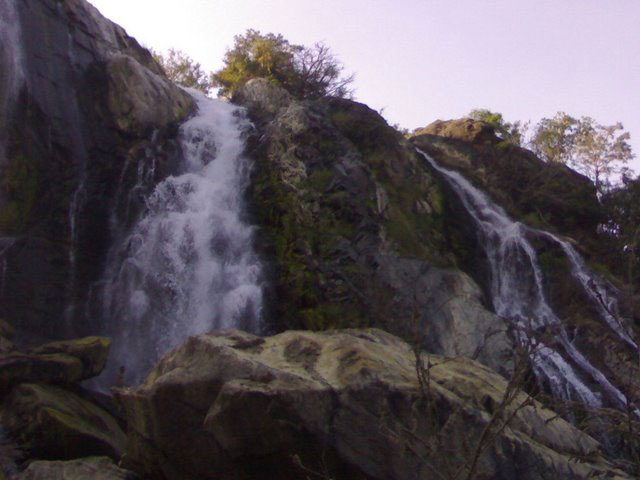Mysore District
Mysore District |
|
About: |
|
|
Mysore is located towards the southern side of Karnataka. It shares boundary with Tamil Nadu to its southeast, the Kodagu district in the west, Mandya district to its north, Hassan district to its northwest and Ramnagaram district to its northeast. Mysore district gets its name from the city of Mysore which is also the headquarters of the district. Mysore gets its name from the word Mahisuru; which when expanded becomes Mahishana Ooru; meaning Mahisha\'s town. Mahisha is the short name of the demon Mahishasura who is supposed to have ruled this area. Mahishasura created havoc on earth and when his cruelty became intolerable, he was killed by the Goddess Chamundeshwari. A statue of Mahishasura and a temple dedicated to Goddess Chamundeshwari on the top of Chamundi Hill near Mysore city stands testimony to this event Mysore is at 770m above sea level and 140 kms from Bangalore. Also known as the City of Palaces, Mysore retains a quaint charm, that never fails to enchant. Situated in the southern part of the Deccan Plateau, Mysore District is an undulating tableland, covered in parts by granite outcrops and fringed by verdant forests. From ancient times, this district has played a significant role in the history of South India. Mysore District is a popular tourist destination, offering several attractions ranging from the royal splendour of Mysore City and its fabulous Dasara Festival to exquisite temples, pilgrimage centres and scenic spots. A tourist's paradise with varied attractions from Mysore Palace to Nagarhole National Park; this district has a prominent place in the history of Karnataka. Mysore was ruled by the Wodeyars from the year 1399 till the independence of India in the year 1947. Mysore's prominence can be gauged from the fact that the Karnataka state was known previously as Mysore state. Mysore district gets its name from the city of Mysore which is also the headquarters of the district. A statue of Mahishasura, after whom the city is named, and a temple dedicated to Goddess Chamundeshwari on the top of Chamundi Hill near Mysore city, relate to the legend of its origin. Mysore, the administrative head quarter of the district is a pleasant city with an old world charm, contributed by its broad shady avenues, well laid out gardens, fine buildings and a salubrious climate. The district offers some of the worth visiting sites in the state including Mysore Palace, Chamundi Hill, Zoo, St. Philomena's Church, Brindavan Garden, Rail Museum, Jaganmohana Palace, Ranganathittu, Somanathapura. |
|
Location info: |
|
| Mysore District lies in the southern part of the Deccan Plateau. It is 770 m above the sea level and has an area of 11,950 sq km. | |
Climate/Weather of Mysore District: |
|
| The temperature in the district varies from 15 deg. C in winters to 35 deg. C in summers. Mysore district receives an average rainfall of 785mm | |
History of Mysore District: |
|
|
The earliest known reference of rulers in Mysore district are the Gangas who during the rule of King Avinitha (469-529 CE), moved the capital from Kolar to Talakad on the banks of the river Kaveri in the Tirumakudal-Narsipur Taluk Talakad remained their regal capital till the end of the Ganga rule in the early 11th century. Gangas ruled over a greater part of Mysore district, then known by the name of Gangavadi. In the end of the 8th century, the Rashtrakuta king Dhruva Dharavarsha defeated the Ganga king Shivamara II and wrested Gangavadi from him. Gangavadi came under the governorship of Kambarasa, the son of Dhruva Dharavarsha. Gangas who were overthrown from Gangavadi, had to wait till their king Nitimarga Ereganga (853 - 869 CE) won a victory against the Rashtrakutas at Rajaramudu. Seeing the increasing might of the Gangas, the Rashtrakuta King Amoghavarsha I gave his daughter Revakanimmadi in marriage to the son of Ereganga, Butuga II who became the ruler of Gangavadi. Gangas ruled over Gangavadi till the Ganga king, Rakkasa Ganga (985-1024 CE) was defeated by the Cholas . In the year 1117, Vishnuvardhana, the great king of Hoysala dynasty seized Gangavadi and its capital Talakad from the Cholas. To commemorate this achievement, Vishnuvardhana built the Keerthinarayana temple at Talakad . Gangavadi was ruled by the Hoysalas till the death of their last ruler, Veera Ballala III after which Gangavadi became a part of the Vijayanagar Empire. In 1399, Yaduraya established the Wodeyar dynasty at Mysore . It remained as a feudatory to the Vijayanagar Empire owing allegiance to the Vijayanagar kings and the Vijayanagar representative at Srirangapatna, till the fall of the Vijayanagar Empire in the year 1565 CE. In the vacuum that got created, Raja Wodeyar I (1578-1617) established control and became the first major ruler of the Wodeyar family. He defeated the Vijayanagar representative in a battle at Kesare near Mysore, shifted his capital from Mysore to Srirangapatna in 1610 AD. The Wodeyars continued to rule over Mysore till the reign of Krishnaraja Wodeyar II (1734-1766), when Hyder Ali Khan and his son Tipu Sultan became the virtual rulers of Mysore . Though there were Wodeyar kings during the rule of Hyder Ali and Tipu Sultan, they were mere figureheads. With the death of Tipu Sultan in the year 1799 under the hands of the British, the Wodeyars were reinstated to the throne of Mysore and the capital was also shifted back to Mysore. Prince Krishnaraja Wodeyar III who was just 5 years old was installed on the throne of Mysore in 1799. Wodeyars were the subisidaries of the British Empire and had to pay annual subsidies. During the rule of Krishnaraja Wodeyar III, the British took the kingdom back from Wodeyars in the year 1831 under the pretext that the Wodeyar king did not pay the annual subsidy. Commissioners were appointed to rule over the Mysore kingdom. Mark Cubbon and L. B. Bowring were the prominent British Commissioners who ruled over Mysore. However, the Wodeyar kings raised a plea against this with the British Parliament who gave a ruling favour of the Wodeyars. In the year 1881, Chamaraja Wodeyar IX (son of Krishnaraja Wodeyar III and Wodeyar king since 1868) was given back the reins of the Mysore kingdom from the British . The Wodeyars continued to rule over the Mysore Kingdom, till the rule of Jayachamaraja Wodeyar who in the year 1947, merged his Kingdom into the new dominion of independent India. He remained as a Maharaja till India became a republic in the year 1950 after which he was anointed as a Raja Pramukh (a constitutional position) as the head of the [Mysore] state till 1956. In 1956, after the reorganisation of Indian states, the Mysore state was born and Jayachamaraja Wodeyar was made as the governor of this state; the position which he held till the year 1964. |
|
Educational Institutions of Mysore District: |
|
|
Other Institutions
|
Medical & Health Science Colleges in Mysore
BEd & Teacher Education Colleges in Mysore
|
Langauge |
|
| The prominent language spoken is Kannada. Other languages like Marathi, Urdu,Telugu and Gujarati are also spoken by small portion of population. | |
Culture of Mysore District: |
|
|
The festival season of Dusshera (September/October) is celebrated in grand style in Mysore. On the last day, of the 10 day festival, a procession of the state's guards lead the Goddess Chamundi seated on a golden howdah mounted on an elephant. The procession is followed by various tableaux, a visual treat rarely seen anywhere else in the world. Angamani is a major festive event in Melkote, a pilgrim town in Mysore District of Karnataka. It was originally a folk festival celebrated in the rural areas. The festival has however been adapted by the elite religious class into the temple fold. It is now an important temple festival of the town. |
|
How to reach Mysore District? |
|
|
Nearest Railway Station:There are many train services operating between Bangalore and Mysore. The Shatabdi Express connects Mysore to Chennai. The ideal route to reach Mysore is via Bangalore. Railway Stations
|
|
| Nearest Airport:Bangalore International Airport | |
|
Road Transport:State Highways connect Mysore to the National Highways and to all parts of the country. Bus services by Karnataka Road Transport Corporation and transport corporations of the neighboring states as well as private tour operators make it easy to reach the city without any difficulty. It is only a 3 hour journey from Bangalore. Bus Stations
|
|
Tourist Attraction |
|
|
The Maharaja's Palace is one of the important sights in Mysore. Built in Indo-Saracenic style with domes, turrets, arches and colonnades,the Palace is a treasure house of exquisite carvings and works of art from all over the world. Intricately carved doors open on to luxuriously furnished rooms. The majestic Durbar Hall has an ornate ceiling and many sculpted pillars. The magnificent jewel studded golden throne of the Wodeyars is displayed here during the Dasera festival. Illuminated on Sundays and public holidays ,the palace presents a spectacle of breathtaking beauty. Brindavan Gardens St. Philomena's Church Mysore Zoo Nugu reservoir ocuupies the northern part of the Nugu Wildlife Sanctuary. It is built across the Nugu River, a tributary of the Cauvery.The Nugu Wildlife Sanctuary lies to the north of Bandipur National Park. Nugu Reservoir is in Beerwal of H D Kote taluk. Taraka Reservoir has been built across river Taraka near village Penjahalli in Mysore. The catchment area is nearly 300 sq km. It is 1,273 m long and 32 m high. Sangam, 3 km south of Srirangapatna,The place is also called as 'Parashuram Kshetra' because Parashuram is said to have performed sin-cleansing holy dips here. This quiet place has shrines of Parashuram, Maruti and a newly built Basaveswara temple. Sera is a beautiful village situated close to the town of Kushalnagar and forms a part of the Tibetan refugee settlement area.The village serves as a healthy place to live and has a clean atmosphere. The people of the village speak Tibetan. It houses two monasteries with around 5,000 monks. Balamuri:Is 20 km from the city of Mysore. River Cauvery flowing down from the Krishnarajasagar reservoir, takes a graceful deviation at Balamuri, flowing towards the ancient town of Srirangapatna. Chunchanakatte Falls is located at at Chunchanakatte in Mysore District of Karnataka. This fall cacading about 20 m is a magnificent attraction. Arabithittu Wildlife Sanctuary: 14 sq km, Arabithittu Wildlife Sanctuary, established in 1985.The area has scrub forests and plantations and is surrounded by agricultural fields.Leopard, fox, spotted deer, wild pig, porcupine, hare and common mongoose are the fauna spotted here. Bandipur National Park, a tiger reserve, is situated 65 km away.The land is a combination of chains of hills, hillocks, and watercourses. The vegetation in the park includes scrubs, tropical dry deciduous forests, and moist mixed deciduous forests. Cauvery Wildlife Sanctuary is located in the districts of Mysore.The sanctuary is occupied by dry deciduous forests and some patches of scrub forest. Inhabitants include tiger, leopard, elephant, wild pig, sambar, spotted deer, barking deer, four-horned antelope.The sanctuary is known for its masheer fish. Besides, trekking trails, birding trails, rock climbing sites and angling pools are available. Nugu Wildlife Sanctuary is situated north of Bandipur National Park.It covers about 30 sq km and the northern part of the sanctuary is occupied by the Nugu Reservoir.October to April is ideal to visit the sanctuary. Chamundi Hills is located about 10 km from Mysore. The 2000-year-old Chamundeswari Temple is located right on top of the hill. The Nandi, a famous monolith with a height of 4.8 m, is located halfway up the hill. Karapur Forest nestles on the Southern fringes of Karnataka's Nagarahole National Park. River Kabini flows through this forest. Karighatta is a small hillock, on the banks of the river Lokapavani, which is 20 km away from the city of Mysore and 6 km from Srirangapatna.The temple atop the hill dedicated to Lord Srinivasa, attracts thousands of people every year. There are lots of long and sharp grasses known as 'Dharbe' around the temple. Kuderu Jain Temple is positioned at Kuderu village of Tirumakudalu Narasipur (T Narasipur) Taluk in Mysore District in Karnataka.The temple enshrines the idol of Bhagvan Adinatha in the padmasana posture. Jagmohan Palace: Placed at the west of Mysore Palace in Mysore, Jagmohan Palace showcases antiques and Wodeyar memorabilia, including weird and wonderful musical machines, rare instruments and paintings by Raja Ravi Varma. Godly Museum:The museum displays the advantages of practising raja yoga. It also explains about the divine consciousness centered in the universe which radiates and manifests through the saints. Another nearby attraction is the statue of the demon Mahishasura. The museum also displays a series of paintings depicting the various stages of spiritual life. Indira Gandhi Rashtriya Manav Sangrahalaya:The museum is intended for the preservation of traditional Indian art and culture. It also serves as a cultural center for all those who are interested in learning the rural arts of India. The displayed items include examples of both old and new handicrafts and various art works such as Gujarati embroidery and Rajasthan terracotta sculpture. Kodi Bhairava Temple is one of the most popular temples of Mysore district. This temple stands in the compound of the Mysore Palace. The temple is known by this name, as it is located on the weir of Devaraya Sagara, a dried-up tank popularly known as Doddakere. Chamarajendra Zoological Gardens, The Art Gallery Daria Daulat Bagh Tipu's Summer Palace,built in 1784,is located here.Made of teak,this Indo-Sarcenic structure has ornate and beautiful frescos.It is now a museum and tells eloquently of Tipu's valor and his losing battle against the British. Fort Nearest Visiting places:
|
|
Hotels/Lodge/Accommodation nearby Mysore District: |
|
|
|
Links |
|
| http://www.mysore.nic.in/ | |
Mysore District Major Attraction |
| Mudukuthore Temples |
| Mudukuthore is located at a distance of 60 km from Mysore, 25 km from Somnathapur, 5 km from T.Narsipur and is close to Talakad. The place is known for the temple of Lord Mallikarjuna. During January-February, every year, a big festival fair is organized for a week where cattle and agricultural items are traded.....more |
| Nanjanagudu Temples |
| Located near the city of Mysore, the town of Nanjanagudu (a.k.a. Nanjangud) is a traditional and historical place known for the temple of Lord Shiva, and a variety of flavorful bananas that are grown in the region, called Rasabale....more |
| T.Narasipura Temples |
| Tirumakudalu-Narasipura (Kannada: ) , officially known as T.Narasipura [1],is a panchayat town in Mysore district in the Indian state of Karnataka. The first letter "T" of the name (T.Narasipura) refers to Tirumakudalu,the peninsular town (Trimakuta in Sanskrit) at the confluence of the Kaveri, Kabini and Spatika Sarovar (a hidden mythical lake or spring, also named Gupta Gamini)....more |
| Talakadu Temples |
| Talakad is a scenic and spiritual pilgrimage center located in near T. Narasipura, Mysore district. Talakad is also know as Talakadu in Kannada, state language of Karnataka. Talakad is situated on the banks of the Kapila Cauvery River. Talakad is about 130 Kms from Bangalore and 50 Kms from Mysore. River Cauvery makes a sharp turn here.....more |
| Mysore Historical |
| 140 Kms from Bangalore lies the abode of untold grandeur and glory. Mysore,the capital city of the Wodeyars has always enchanted its admirers with its quaint charm,rich heritage, magnificent palaces,beautifully laid-out gardens, imposing buildings,broad shady avenues and sacred temples.....more |
| Arabithittu Wildlife Sanctuary |
| Spread across 14 sq km, Arabithittu Wildlife Sanctuary, established in 1985, is situated in Mysore District of Karnataka. The area has scrub forests and plantations and is surrounded by agricultural fields.....more |
| Cauvery Wildlife Sanctuary |
| Holidaying in Karnataka has its advantages. Apart from the ancient and world heritage temples depicting artistic expertise of the dynasties that ruled here, Karnataka offers you a fabulous opportunity to enjoy its majestic natural beauty.....more |
| Nugu Wildlife Sanctuary |
| Nugu Wildlife Sanctuary is situated north of Bandipur National Park in Mysore District, Karnataka. It covers about 30 sq km and the northern part of the sanctuary is occupied by the Nugu Reservoir.....more |
| Nagarhole National Park |
| Nagarhole National Park also known as 'Rajiv Gandhi National Park' is located 94 km away from Mysore. It is spread between Kodagu and Mysore districts. The national park has rich forest cover, little streams, valleys and waterfalls.....more |
| Mysore Archeology |
| This was the capital of Mysore during British times. It was highly developed city with a population of 700,000. Chamaraja established it in 1640. Between 1760 and 1799 the Muslim Hyderali and Tippu Sultan, father and son duo, gained control and shifted the capital to Srirangapatnam in the north.....more |
| Somanathapur Archeology |
| "There is a stillness and everlastingness about the past, it changes not and has a touch of eternity," wrote Pt. Jawaharlal Nehru in his "Discovery of India." These words somehow hold true when one arrives at Somnathpur, a tiny village on the banks of the Kaveri, 140 kms, south-west of Bangalore.....more |
| Balamuri Falls |
| On the way to K.R.S. from Mysore, 3 Km away from the main road, there are two beautiful small waterfalls, which is the hot spot for students and nature lovers. You also come across an ancient Ganesh temple in the vicinity.....more |
| Chunchanakatte Falls |
| Chunchanakatte Falls is a waterfall on the Kaveri River, near the village of Chunchanakatte in Mysore district, Karnataka, India. Water cascades from a height of about 20 meters.It is in the Western Ghats. Here the river falls in two small cascades before joining again to flow as one.....more |
| Kabini River |
| The Kabini is a river of southern India. It originates in Wayanad District of Kerala state, south India from the confluence of the Panamaram River and Mananthavady River, and flows eastward to join the Kaveri River at Tirumakudal Narasipur in Karnataka, which empties into the Bay of Bengal.....more |
| Ranganathittu Bird Sanctuary |
| Ranganathittu Bird Sanctuary, in the southern Indian state of Karnataka, is an important tourist destination from Mysore city orthe adjoining Vrindavan gardens, both of which are barely 20 km away.....more |
| Gundal Reservoir |
| This place is located in Western Ghats hill range starting from Kerala and ending in Tamilnadu. MM Hills also extends beyond B.R.Hills.In between these two hills there is a dam called Gundal dam constructed between two hills,is a picnic spot. In B.R. Hills and attracts lot of devotees from South India.....more |

